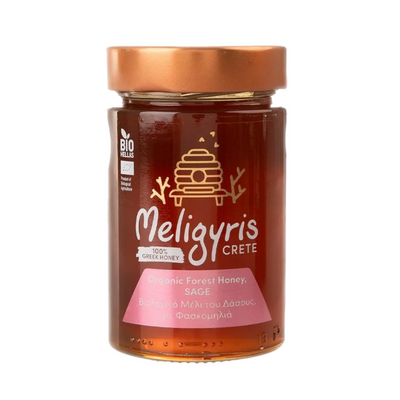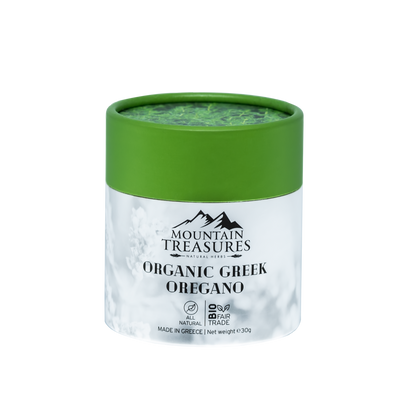The Best Greek Superfoods
By Tassoula Eptakili
From high-phenolic extra virgin olive oil, Greek mountain tea to dried herbs and mastic gum, these pure products can give your health a boost.
Native Superfoods
Greek Oregano adds the familiar fragrance to a Greek salad, but it also provides relief for a sore throat. Olive oil is an essential component of Greek cuisine, but it’s medicinal, too. Honey is a sweetener that also contains more than 180 nutrients. Ancient Greek gastronomy, the forerunner of the food culture of Rome, is the source from which many features of the diet and cuisine of Europe are derived. But that’s not all. Ever since antiquity, the Greeks haven’t just sought to satisfy their hunger or to find enjoyment in foods. Many foods were used to prevent or treat a number of health conditions.
Honey
The history of apiculture and Greek Honey, in Greece goes back thousands of years. Excavations at Phaistos uncovered ceramic beehives from the Minoan era (3400 BC). Hippocrates recommended honey to all his patients; eaten with bread, it was the main food for Pythagoras and his followers. Frequently, the libations to the gods included honey with wine and milk, while ambrosia, the food of the immortals, was said to contain royal jelly. In classical times, desserts with honey were very popular, including honey pies called melitoutta, and plakountes, which also had sesame seeds and spices. With more than 180 nutrients, honey is a food of high nutritional value. It is an excellent source of carbohydrates, antioxidants, B-complex vitamins, trace elements and minerals (calcium, magnesium, zinc, iron, copper) necessary for keeping the body in balance and contributing to everything from bone strength to a healthy metabolism. It has a lower glycaemic index than sugar; in small quantities, it is even suitable for people with diabetes. The great biodiversity of Greece – 1,300 endemic plants and an exceptional variety of flowers, herbs and trees – also affects the quality of the honey produced in the country: it is far superior in flavour, aroma and density than honey from other countries.
Sage
Greek sage, its official botanical name is in fact Salvia officinalis, which is partly derived from the Latin verb salvare, meaning “save,” and alludes to its therapeutic properties. The ancient Greeks used its fresh leaves to treat wounds and snake bites, and as a drink to enhance female fertility. As a beverage, sage-infused “Greek tea,” as the French call it, or “Greek sprout” for the Chinese, remains popular to this day, either on its own or combined with other aromatic herbs.
Sage is also associated with some less scientific benefits. In Syros, for example, they say it exorcises gossip. You will often find little bunches of it hanging outside homes. A beneficial herb, sage has anti-catarrhal properties (for asthma, bronchitis and coughs), as well as anti-fungal and anti-infective action (for flu, gingivitis and insect bites). It is an effective antispasmodic (in cases of dysmenorrhea) and healing agent. Its broader effects include stimulating the nervous system, improving memory and boosting blood circulation, while its antioxidants act against free radicals.
Kozani Crocus
…or red saffron, is probably the result of efforts to tame the wild Crocus cartwrightianus in ancient Greece, as the plant appears frequently in Crete’s Minoan-era frescoes and pottery, as well as in a fresco from the prehistoric settlement of Akrotiri in Santorini depicting a woman collecting the flowers. Saffron was widely used in medicine – the ancient Greeks drank it in a tisane to cure sleeplessness and hangovers. Today, Kozani’s red saffron is one of the most expensive spices in the world (it takes more than 150,000 flowers to produce one kilogram of the stuff) and is very sought-after for its subtle aroma and flavour, its properties as a colouring agent and its health benefits. Saffron contains vitamins A, C and B complex, as well as iron, calcium, magnesium, potassium and lycopene, which is known to help prevent cancer. It has powerful antioxidant and anti-aging properties, as its carotenoids protect cells from free radicals. It is good for the digestive tract, boosts the metabolism and improves memory and overall brain function. In addition, it helps fight anxiety and acts as a mood elevator.
A mere pinch is enough to give food a rich yellow colour, a subtle tang and plenty of aroma. It goes particularly well with rice, pasta, white meat and fish; it is used in salads and soups; and it is also used in sweets. It can be found in powder or thread form and as a tea.
Oregano
The ancient Greeks held it to be a symbol of joy and made wedding crowns out of it. But they also knew of its therapeutic value and used it as a drink to treat poisoning, diarrhea and colic, or externally to relieve skin inflammation. Arcadia and Tenedos are famous for their oregano. Cretan folk medicine called for oregano leaves fried in olive oil to make a poultice for back pain, and oregano oil offered relief for toothache. Oregano grows practically everywhere in Greece. Fresh or dried, it adds beneficial properties along with its characteristic fragrance to many dishes. Rich in vitamin C, it also contains calcium, magnesium, zinc, iron, potassium, copper, boron, manganese and vitamin A. The essential oil of Greek oregano is considered the best in the world, as recent studies have shown it to have the highest content in carvacrol and thymol, both of which have powerful antioxidant and cancer-fighting properties. It has antibiotic and antiseptic properties as well.
Oregano can relieve intestinal upsets and abdominal pain; it exhibits stimulatory, sudorific and anti-asthmatic effects; it is used to treat flu, colds, gingivitis and sore throat (in a gargling solution). Amazingly, oregano demonstrates 42 times greater antioxidant action than apples, 30 times greater than potatoes and 12 times greater than oranges.
Read the full article here


























































